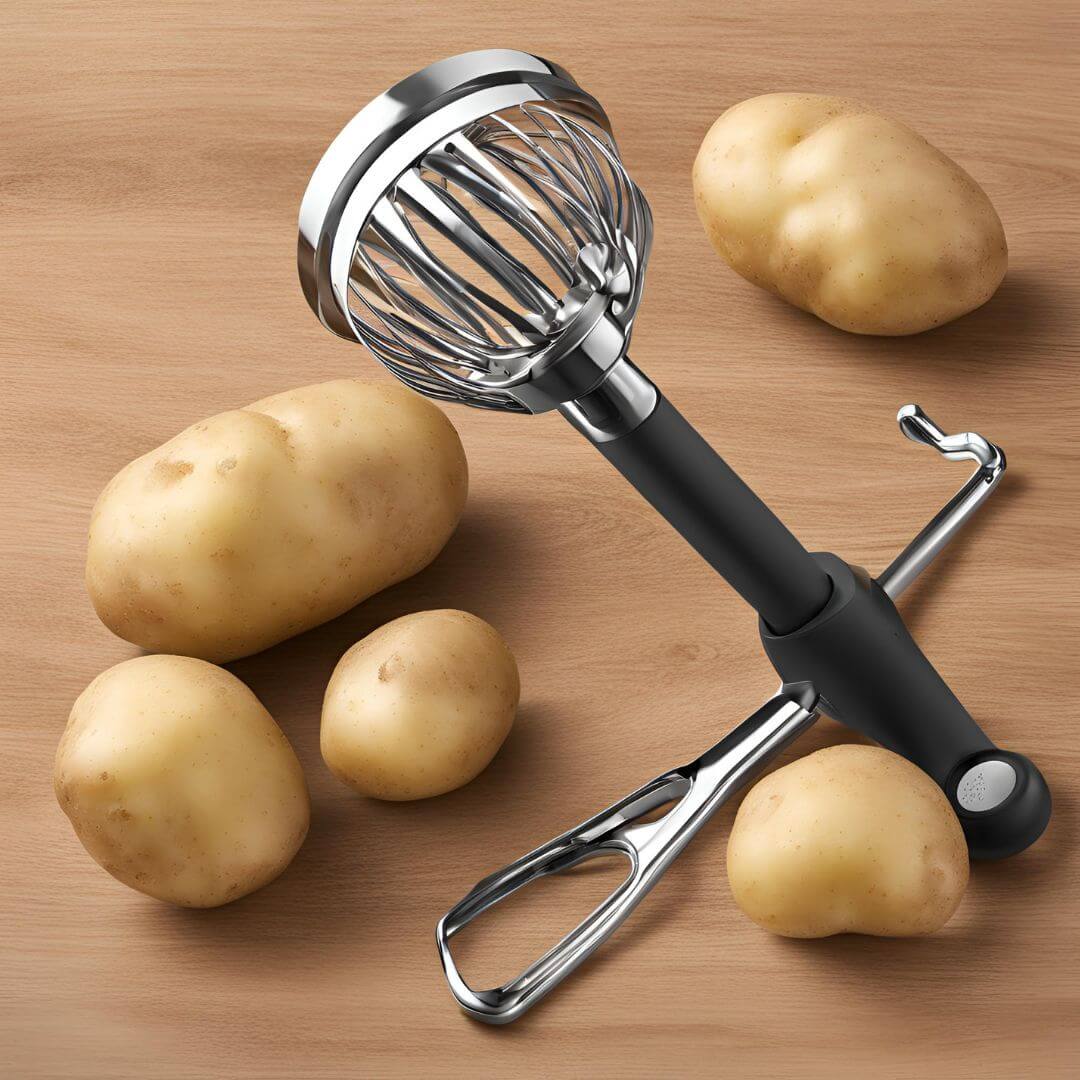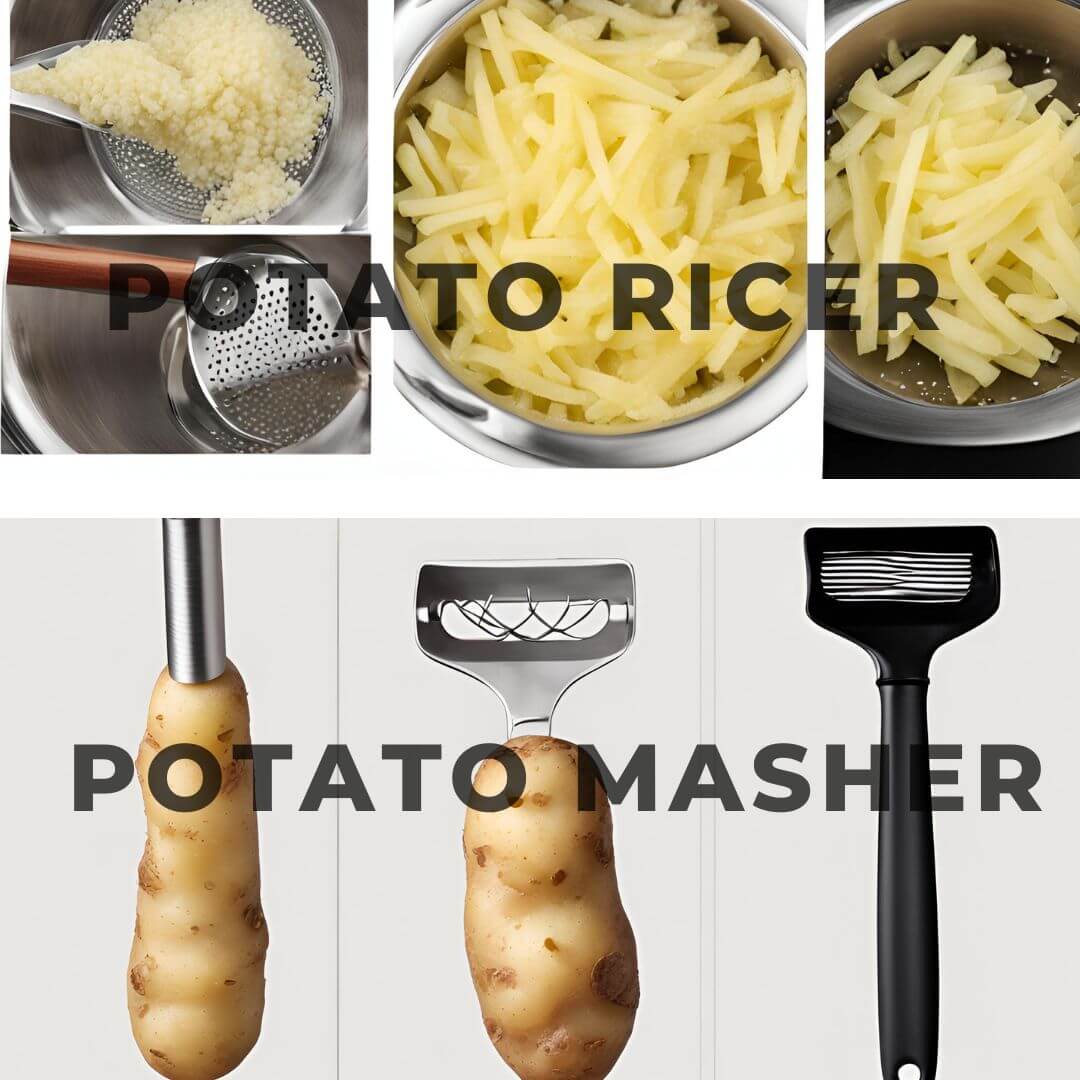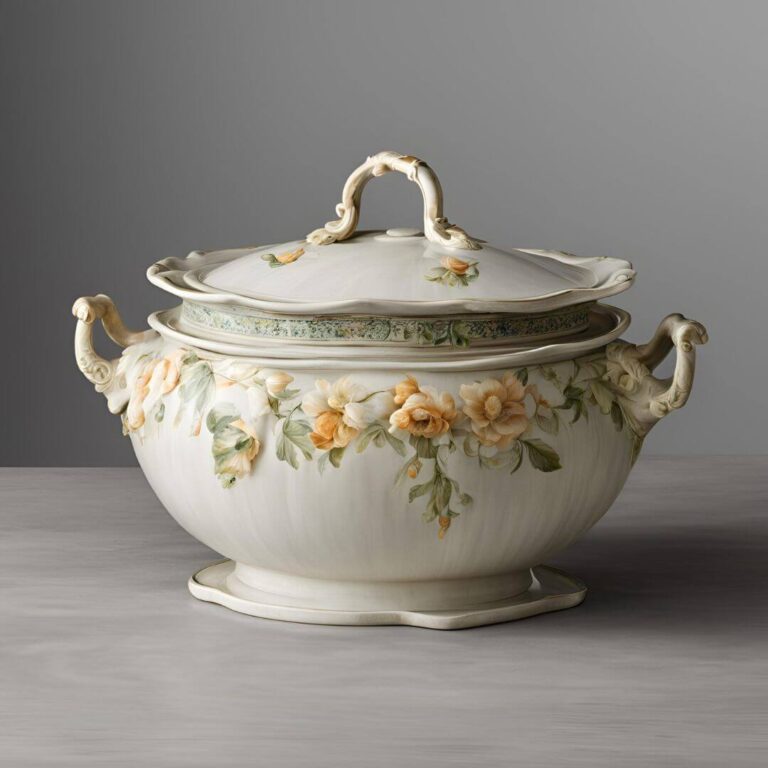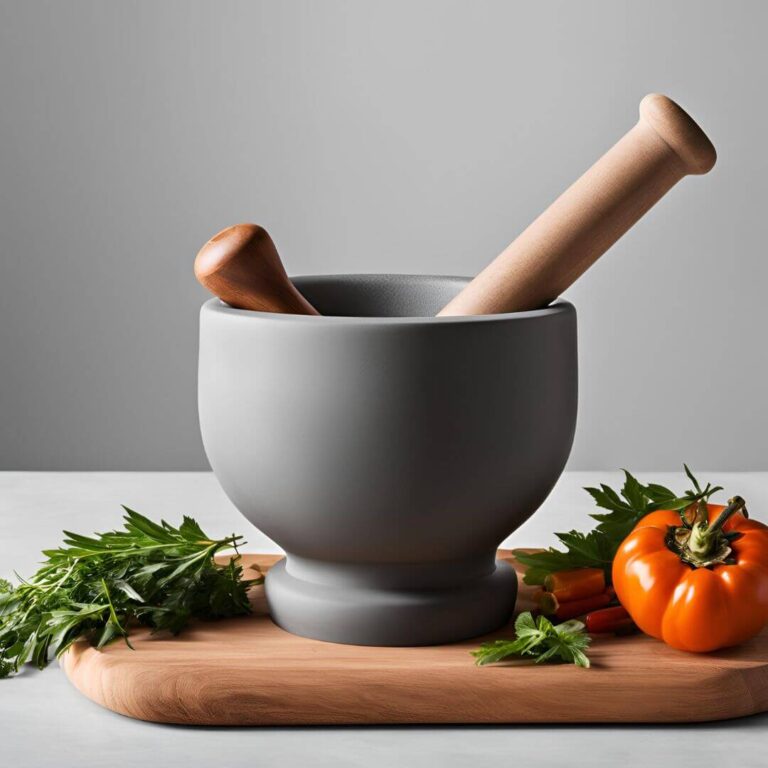Mashed Potato Masher: Best Tool

A mashed potato masher is a kitchen appliance used to mash potatoes to a smooth consistency. This ensures evenly mashed potatoes without lumps.
A mashed potato masher is essential for making perfect mashed potatoes. Its design allows for easy and efficient mashing, giving you a smooth, lump-free texture. Whether you’re preparing a holiday feast or weeknight dinner, this tool simplifies the process.
It usually features a sturdy handle and a perforated or corrugated plate, ensuring the potatoes are mashed thoroughly and evenly. Some mashers also come with ergonomic handles for added comfort, making them easy to use, even for extended periods. Investing in a good masher can improve your cooking skills and make meal preparation enjoyable.
The Quest For Fluffy Mashed Potatoes:
Achieving fluffy mashed potatoes is a culinary dream. Proper massage plays a key role. Let’s find out what makes mashed potatoes perfect.
1. Essential Qualities Of Perfect Mashed Potatoes:
The perfect mashed potato has a few essential qualities. These include texture, taste and consistency.
- Texture: The potatoes should be creamy and smooth.
- Flavour: They should taste buttery and rich.
- Consistency: Each bite should be light and fluffy.
2. Why Consistency Matters:
Consistency is essential for mashed potatoes. Each spoonful should feel the same.
An uneven mash can ruin the experience. A proper masher ensures an even texture.
| Type of Masher | Effect on Consistency |
| Wire Masher | Creates smooth, fluffy potatoes |
| Ricer | Produces ultra-smooth consistency |
| Fork | Can lead to lumps |
Mashed Potato Masher: The Ultimate Tool
Making perfect mashed potatoes requires the right tools. A mashed potato masher is essential for achieving smooth, fluffy results. With so many choices available, searching for the best one can be challenging. This guide will help you pick the perfect appliance for your kitchen.
1. Different Types Of Mashers:
Mashers come in different types, each with unique features. Here are a few common ones.
- Wire Masher: Ideal for light, fluffy mashed potatoes. The wire design reduces lumps.
- Perforated Masher: Features small holes for a smoother texture.
- Electric Masher: Provides effortless mashing with consistent results.
- Ricer: Similar to a garlic press. It creates very smooth potatoes.
2. Material Considerations: Stainless Steel Vs. Silicone
Choosing the suitable material for your masher is very important. Here are the pros and cons of stainless steel and silicone mashers:
| Material | Pros | Cons |
| Stainless Steel |
|
|
| Silicone |
|
|
Choose a masher based on your needs and preferences. Both materials have their advantages. A mashed potato masher is a versatile tool that makes your cooking experience enjoyable and efficient.
Ergonomics Of Mashers: Comfort Meets Functionality
Mashed potato mashers have evolved. The focus is now on ergonomics. Comfort and functionality are essential, making mashing potatoes easier and more enjoyable. Let’s find the ergonomic features of potato mashers.
1. Handle Design And Grip Comfort:
The handle design is essential for comfort. Many mashers have soft, non-slip grips, which prevent hand fatigue. A good handle design fits your hand well and should be a manageable size.
Some handles are contoured. This means they match the shape of your hand. Contoured handles provide extra comfort. They reduce stress on your wrists.
2. Efficiency In Mashing Mechanics:
Mashing mechanics are critical to efficiency. Mashers should have a strong stainless-steel head. This ensures that the potatoes are mashed smoothly. There should be a good balance between the head holes and solid parts.
A good masher has a lever action, which means you use less effort to mash. Lever action reduces the power required, making the mashing process quick and easy.
Some mashers come with a spring-loaded mechanism. It helps to apply even pressure. Even pressure results in a smooth mash. It also saves time and energy.
| Feature | Benefit |
| Non-slip grip | Prevents hand fatigue |
| Contoured handle | Fits hand shape for comfort |
| Stainless-steel head | Mashes smoothly |
| Lever action | Less effort needed |
| Spring-loaded mechanism | Even pressure for smoother mash |
- Ergonomic designs make mashing easier.
- Comfortable handles reduce wrist strain.
- Efficient mechanics save time and energy.
Masher Maintenance: Prolonging Your Tool’s Life
Maintaining your mashed potato masher is crucial to its longevity. Proper care ensures that it remains effective and healthy. Follow these simple tips to keep your Masher in top shape.
1. Cleaning Tips For Mashers:
Cleaning your masher after each use prevents food build-up. Here are some practical cleaning tips.
- Rinse immediately: Wash off any potato residue with warm water.
- Use a brush: Scrub the masher with a brush to remove stuck bits.
- Soak in soapy water: Let it sit in warm, soapy water for 10 minutes.
- Rinse thoroughly: Ensure no soap remains on the masher.
- Dry completely: Use a cloth to dry or let it air dry.
2. Storage Solutions To Prevent Damage:
Proper storage is essential to avoid damage. Here are some storage solutions.
- Hang on a hook: This keeps the masher off surfaces and prevents it from bending.
- Store in a drawer: Place it with other utensils, but avoid overcrowding.
- Use a utensil holder: Keep it upright in a holder for easy access.
- Avoid moisture: Keep in a dry place to avoid rusting.
Follow these tips to ensure your mashed potato masher lasts for years. Proper cleaning and storage are key to longevity.
Advanced Mashing Techniques:

Mastering mashed potatoes requires more than just boiling and mashing. Advanced techniques can elevate your mash to a whole new level. These tips will help you achieve smooth, flavorful mashed potatoes every time.
1. Expert Tips For A Smoother Mash:
Choose the right potato. Russet or Yukon Gold potatoes work best. Their high starch content makes them ideal for mashing.
2. Boil potatoes evenly:
Cut them into equal-sized pieces. This ensures even cooking. Overcooking or undercooking pieces can ruin the texture.
3. Use a potato ricer or food mill:
These tools create a smooth texture. They break the potatoes with little effort.
1. Add warm liquids:
Use warm milk or cream. Cold liquid can make potatoes sticky.
| Step | Action |
| 1 | Choose the right potatoes |
| 2 | Cut potatoes evenly |
| 3 | Use a potato ricer |
| 4 | Add warm liquids |
2. Incorporating Additional Flavors:
- Garlic: Roast garlic until soft. Mix it into the potatoes for a rich flavour.
- Herbs: Fresh herbs like chives or parsley can enhance taste. Add them just before serving.
- Cheese: Parmesan, cheddar, or goat cheese add creaminess. Mix the cheese while the potatoes are still hot.
- Butter: Use real butter for a rich taste. Melt it and stir it into the mash.
Common Mashing Mistakes To Avoid:
Making mashed potatoes may seem simple. But small mistakes can spoil the dish. Here are common mashing mistakes to avoid. Follow these tips to achieve perfect, fluffy mashed potatoes.
1. Overworking The Potatoes:
Overworking the potatoes can make them sticky. Overusing a masher or mixer breaks down the starch, making the potatoes sticky. Instead, mash them until just smooth. Stop mashing when you reach the desired consistency.
Use a potato masher for better control. Avoid electric mixers or blenders, as they can quickly overwork potatoes. Keep the mashing process gentle and slow.
2. Choosing The Wrong Potato Variety:
Choosing the wrong potato variety affects the texture of your mash. Particular potatoes are good for mashing than others. Russet potatoes are high in starch. They make fluffy mashed potatoes. Yukon Gold potatoes are also a better option. They have a creamy texture.
Avoid waxy potatoes like Red Bliss. They have less starch and more moisture. This makes the mash thicker and heavier. Always select the right potato for the better mash.
| Potato Variety | Best Use |
| Russet | Fluffy mashed potatoes |
| Yukon Gold | Creamy mashed potatoes |
| Red Bliss | Not recommended for mashing |
By following these tips, you can avoid common mashing mistakes and have perfect mashed potatoes every time.
Masher Vs. Ricer: A Comparative Analysis

Choosing between a mashed potato masher and a ricer can be difficult. Both tools help make delicious mashed potatoes, but they give different results. This comparison will help you choose which tool best suits your requirements.
1. Textural Differences In The End Product:
The texture of mashed potatoes varies depending on the tool used. A masher gives a chunky texture, and small potato lumps, which some people like, can be present.
On the other hand, a cultivar produces smooth and fluffy potatoes. Potatoes pass through small holes so that there are no lumps. This tool is excellent for making creamy mashed potatoes.
| Tool | Texture |
| Masher | Chunky with lumps |
| Ricer | Smooth and fluffy |
2. Ease Of Use And Efficiency:
Using a masher is straightforward. Mash the potatoes. This process can be fun, but it requires some effort. Mashing a lot can tire your arms.
Rice is different in use. You place the potato in the device and squeeze the handles. This tool requires less effort, making it easier for large batches. Rice saves time in the kitchen, ensuring even consistency.
- Masher: Easy to use but labour-intensive
- Ricer: Effortless and efficient for large quantities
Recipes That Shine With The Perfect Mash:
Discover the joy of using a mashed potato masher in your kitchen. This tool makes your potatoes fluffy and smooth. Let’s explore some recipes that shine with the perfect mash.
1. Classic Mashed Potatoes Recipe:

Classic mashed potatoes are a family favourite. Follow this simple recipe.
- Ingredients:
- 5 large potatoes
- 1/2 cup milk
- 1/4 cup butter
- Salt and pepper to taste
- Instructions:
- Peel and chop the potatoes.
- Boil them in salted water until tender.
- Drain and return them to the pot.
- Mash the potatoes with a masher.
- Mix in butter and milk.
- Add salt and pepper.
- Serve hot and enjoy.
2. Innovative Dishes With Mashed Potatoes:
Mashed potatoes can be more than a side dish. Try these innovative recipes.
| Dish | Description |
| Potato Pancakes | Mix mashed potatoes with eggs and flour. Fry until golden brown. |
| Shepherd’s Pie | Layer mashed potatoes over a meat and veggie mix. Bake until crispy. |
| Mashed Potato Casserole | Combine mashed potatoes with cheese and bake until bubbly. |
Related Questions:
What Is The Best Tool For Mashing Potatoes?
The best tool for mashing potatoes is a potato masher. It squeezes the potatoes through tiny holes to make smooth and fluffy mashed potatoes. It breaks them down gently without overworking them.
If you prefer chunkier mashed potatoes, you can use a potato masher instead. Both tools work well, but a riser usually gives the best and most consistent results.
What Is The Best Alternative To A Potato Masher?
The best alternative to a potato masher is a potato ricer. It makes smooth and fluffy mashed potatoes by pressing them through tiny holes. This gives a consistent texture. If you don’t have a ricer, you can use a fork for small amounts, but it takes more effort.
An electric mixer works for large batches, but avoid overmixing to prevent gumminess.
Conclusion
A mashed potato masher is an essential kitchen tool. This ensures smooth, creamy potatoes every time. Invest in a quality masher for effortless cooking. Say goodbye to lumpy potatoes and improve your diet. Simplify your kitchen tasks and enjoy perfect mashed potatoes with ease. Your culinary creations deserve the best tools.






